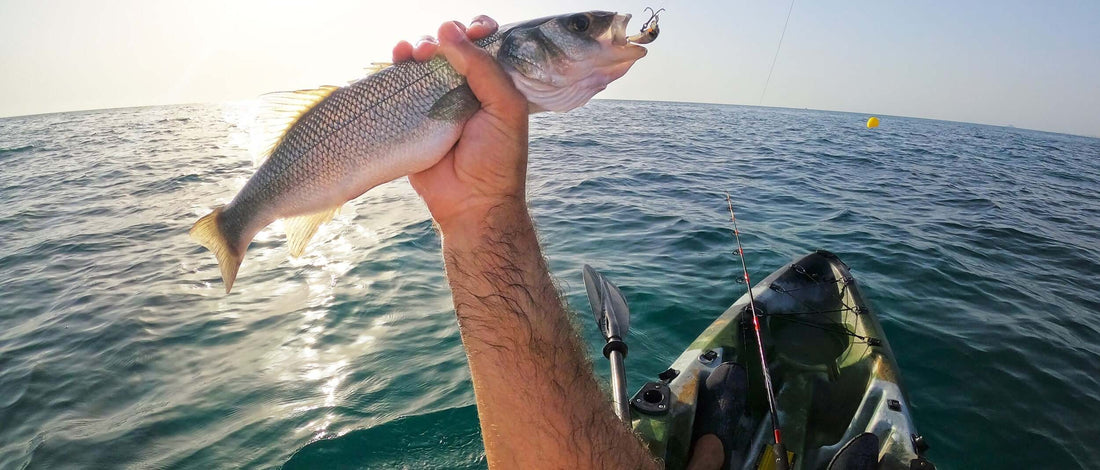The tongue-in-cheek answer is, of course, whatever the fish are biting. However, that simplistic answer doesn’t always help when you are packing your kayak for a day on the water.
Like any hobbyist, you can quickly get acquisition fever. You start with a rod and reel, but you become enamored with the next thing. . . and the next thing. . . and the next thing. Pretty soon you are storing multiple rods, a half dozen tackle boxes, and assorted gadgets and whatnots. It happens to the best of us.
But if you’ve chosen kayak fishing for its simplicity, stealth, access, and cost-saving, then you have also limited your ability to float all those options. However, you don’t need to fret. With a little will-power and advanced planning, you can take what you need for a successful day of fishing - no matter what is biting.
While you might have a lure for every occasion and a stock of bait for what’s biting, you will be best served on your kayak by keeping your options limited. While there isn’t one fool-proof lure that will catch fish every time, there are some tried-and-true options that give you the best chance to find the fish and stay out on the water longer.
Best Kayak Fishing Bait
Bait for what’s biting.
If you know what is biting, then it is a slam dunk to fish with that. If you can get live bait (from the bait shop or your own procurement), then you are in luck. However, fishing with live bait adds a bit more preparation.
If you are fishing with live fish (mackerel, sardines, anchovies, smelt, squid, etc), you will need time to get it and a way to keep it alive.
- Know what is biting: check reports to see what is getting the bites.
- Know how long you will be fishing: you will need to plan enough bait for the amount of time that you will be out. Likely, you will need to prepare by fishing for your bait the day before (or near enough to your fishing trip that they are fresh).
- Invest in a bait tank: you will need a way to keep the bait alive so a bait tank is important. Note that if you are using a tank full of water, it can add a substantial amount of weight to your load.
If you don’t use live bait, check for what is biting and pick your lures/flies accordingly. You don’t need to pack the whole tackle box if you know what you are targeting.
- Bass: Bass are a popular fish with kayak fishers. If the bass are biting, get in the action. Experts suggest a spinnerbait (easy to use and catches fish at all depths), ned rig (small packages but can work when other things aren’t), top water frog (can trigger bites in thick vegetation), wacky rig (can be irresistible to bass), and a texas rig (also excellent to work in weedy areas like lily pads and around trees).
Tip: As a kayak angler, you know the importance of stealth and minimal space. To that end, keep two-three pre-rigged rods in your rod holder or milk crate. This way, you can quickly change out rods if you come upon a likely spot (without spooking the fish) without having to change lures. You can also maximize your time on the water by not having to make time sucking changes in limited space.
Bait for when you don’t know what’s biting.
But what do you do when you don’t know what’s biting? (I mean, whoever knows exactly what is biting, amirite?). Well, you might not know exactly what is biting and where, but to give yourself the best chance with the least amount of gear, focus on three lures - one for topwater, one for intermediate presentation, and one for bottom water. As the fish feed over the course of the day, you will be prepped to respond. That might seem minimalistic, but isn’t that appropriate for the kayak angler?
- Topwater: Pick a topwater lure for the vegetation you will be encountering. If you are in the weeds, pick something like a hollow body frog. In open water, you can choose something with trebles. Think about water conditions as well. A larger, louder lure can be used in rough water, while calm water will require more subtle presentation.
- Intermediate: For intermediate water, you will be looking to get to the median of the column. A slow sinking twitch bait or lightly weighted swimbait is a good choice.
- Bottom Water: Like always you are looking to mimic what the fish are biting. If you are looking to get hits from bass, try a skirted jig with a crawfish trailer as they are often feeding on crayfish. Saltwater species are preying on shrimp and crabs on the bottom, so a heavy jighead shrimp or paddle tail could get you hits.
Tip: Doesn’t matter what you are dropping if the fish don’t believe it. One major tip is to work on a natural presentation. Practice getting your lures to act and react like a natural bait.
For kayak fishers, keeping it simple is the name of the game. Pick a few of your favorites, get proficient at using them in a natural presentation, and you’ll spend more time fishing and less time changing your gear. Happy fishing!

